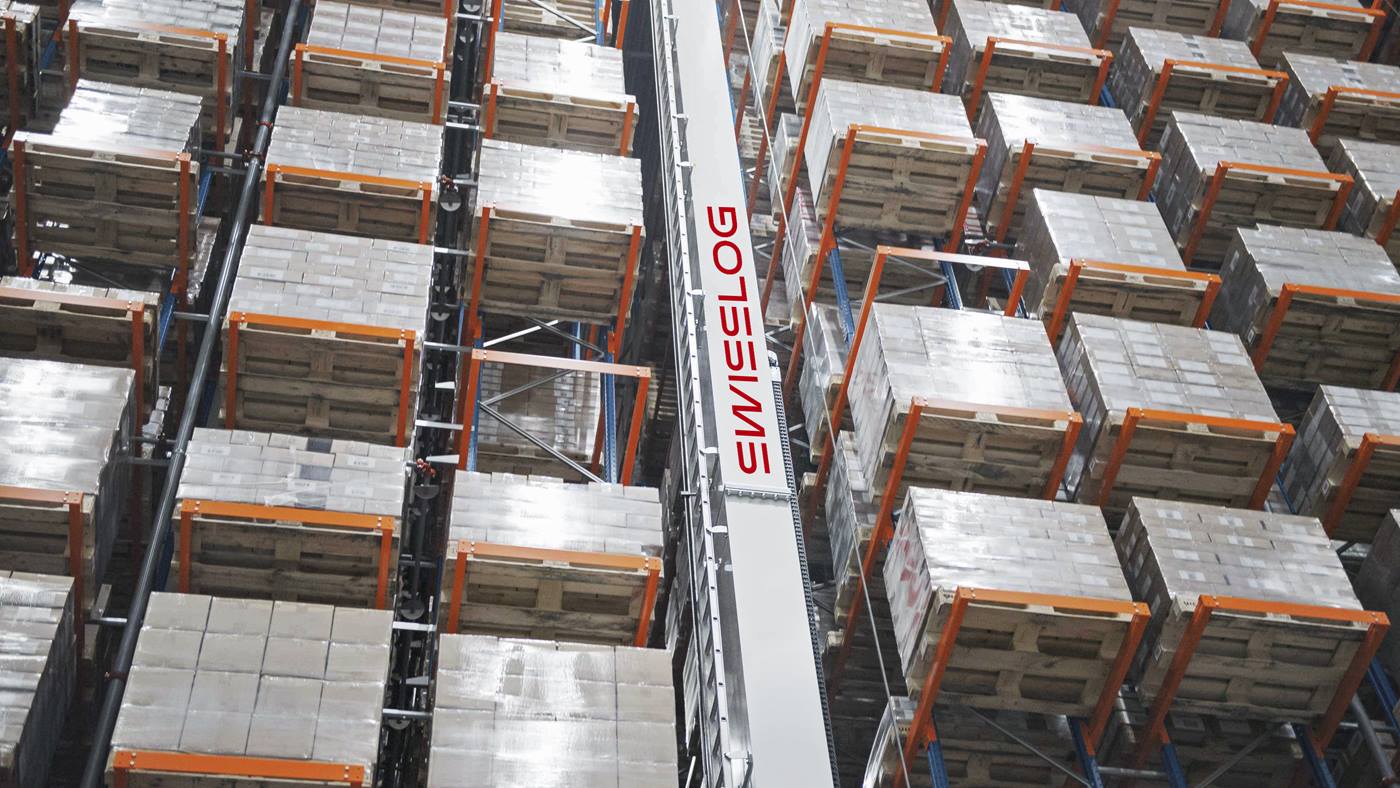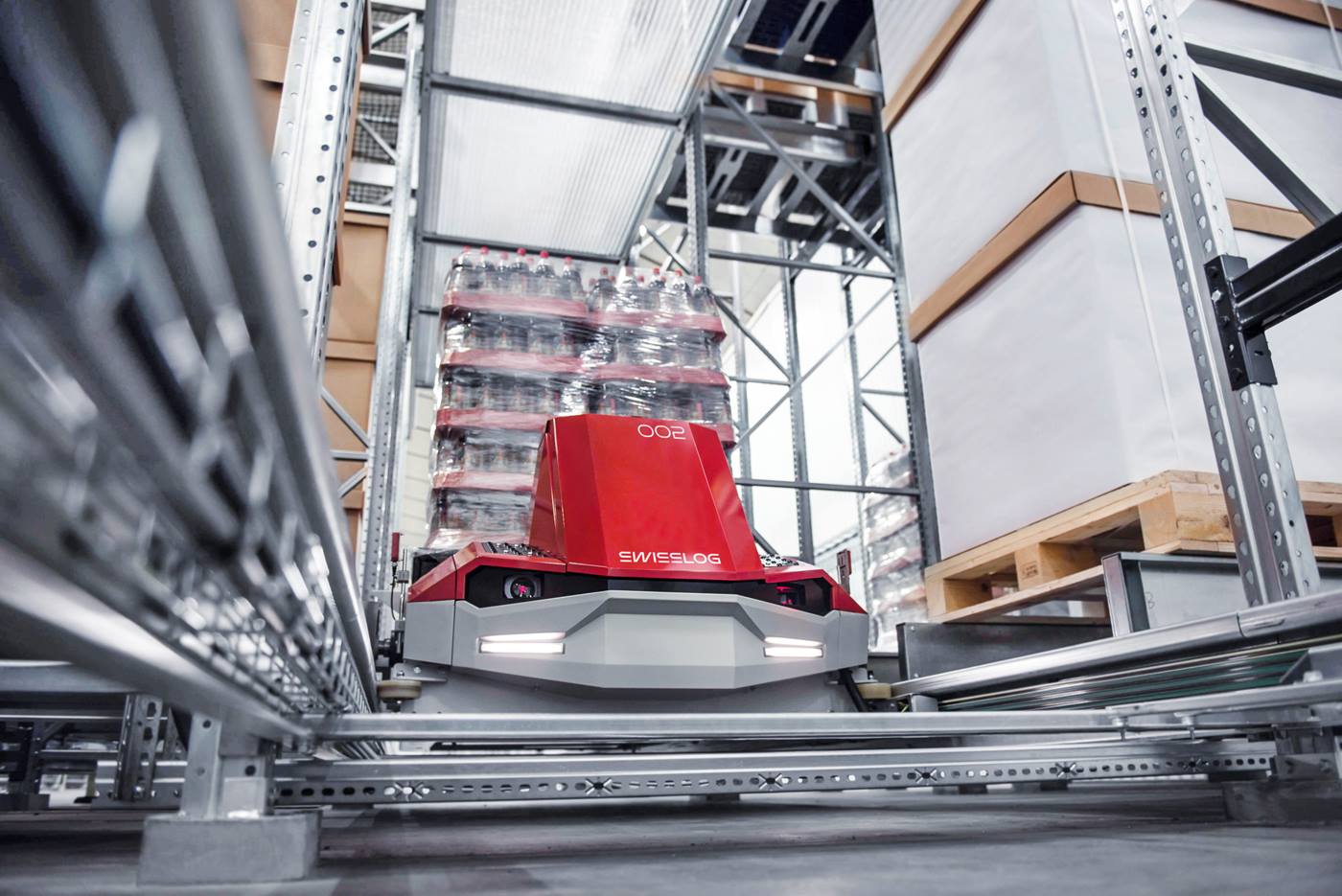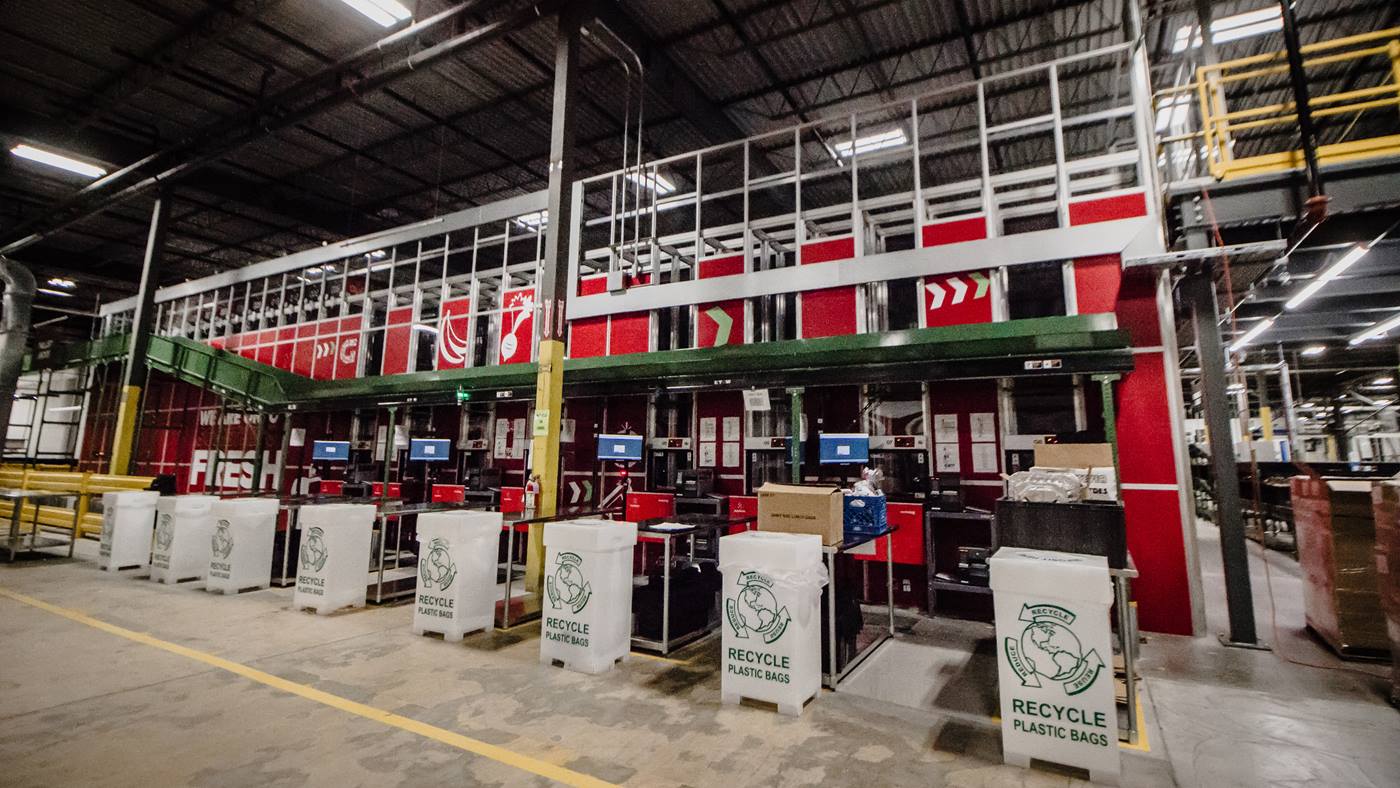How the right food and beverage automation protects food safety
James Sharples
4. Dezember 2023
Food and beverage manufacturers are increasingly turning to automated storage and retrieval systems (ASRS) and other forms of automation to adapt to growing demand, increase storage capacity, and alleviate labor challenges. As they do, they need to not only ensure automation delivers the capacity and efficiency they expect, but also that food safety is protected and even enhanced. In this post, we’ll cover some of the key features that enable automation systems to protect and enhance food safety across the value chain, from manufacturing through distribution to retail e-grocery fulfillment.

Automation in Food and Beverage Manufacturing
Food and beverage manufacturers are turning to automation to increase storage density within their facilities, allowing them to meet growing demand without expanding. Crane- and shuttle-based pallet ASRS both can improve storage density in existing facilities while also streamlining processes and improving inventory control.An automation control system like Swisslog’s SynQ can manage storage and retrieval based on just about any inventory management strategy, including FIFO, LIFO and expiry or best-by dates. Automation also streamlines processes and increases throughput to accelerate speed-to-market.
For example, a dairy processor in the Northeast U.S. needed to expand capacity at its processing facility but wouldn’t accept any compromises in food quality or safety. They deployed Swisslog Vectura cranes with SynQ software to ensure complete product visibility from when product left the processing facility to when it was shipped. The solution, which used food-safe lubricants, also enables pallets to go directly from storage to trailer without sitting on the dock and eliminates product handling not required for quality control.
Automation in Food and Beverage Distribution
Food distributors face many of the same challenges as manufacturers and often rely on similar automated storage and retrieval solutions as their upstream counterparts. Just as in manufacturing environments, automated inventory management, reduced product handling and the precise control of product temperatures enabled by automation can all contribute to food safety.Temperature control is particularly important in the Cold Chain. Here, automated storage and retrieval systems can help reduce employee exposure to the low temperatures required to maintain compliance with food safety regulations. But the same conditions that are so hard on humans can also create challenges for automation systems not specifically tailored to operate in low temperatures.
Stacker cranes can operate reliably in these environments when equipped with specific components and cables and a special grade of steel as Swisslog does with its Vectura cranes. Pallet shuttles have similar requirements.

Swisslog PowerStore Pallet Shuttle System
The Swisslog PowerStore pallet shuttle system deployed at the Lineage Logistics Sunnyvale, Texas distribution center uses low viscosity lubricants, heated controls and capacitors instead of lithium-ion batteries to deliver reliable operation in a 0° F environment.
Automation in E-grocery Fulfillment
When not executed properly, e-grocery fulfillment can introduce quality and safety issues that create customer dissatisfaction. As one of the leaders in e-grocery fulfillment automation, Swisslog has worked with multiple grocery retailers to implement automation systems that protect food quality and safety.Perishable items like dairy, produce and meats are most at risk. Automated fulfillment centers are typically designed with multiple picking zones, including ambient automation, chilled automation and manual picking for frozen and fast-moving products. Products in the chilled automation zone are kept at precise temperatures within a compact cube-based storage system and automation control software manages product retrieval and selection based on expiry and best-by dates.
Special features available within the SynQ control system can also minimize the time orders sit idle waiting for pickup and delivery. For example, SynQ can sequence orders based on complexity and priority to ensure order availability is synchronized with downstream processes to minimize exposure of temperature-controlled products to ambient conditions.
Expertise in Food and Beverage Automation
As a leader in food and beverage automation, Swisslog solutions have been proven in hundreds of ambient, chilled and frozen food and beverage applications around the world. These solutions deliver the reliability, density and efficiency, food and beverage manufacturers require to keep pace with growing demand and reduce their exposure to labor shortages.We understand that safety and quality can never be compromised in the food and beverage industry and our solutions are designed to protect both. From the use of food-safe lubricants and materials designed for frozen environments to our food and beverage-ready automation software, we consistently deliver solutions that meet industry requirements. For more information, contact us.













